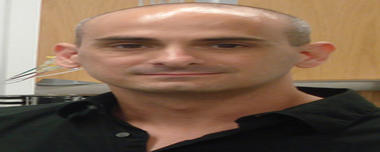
Mark Masino, Ph.D.
E-MAIL: [email protected]
Research Interests:
Most rhythmic motor patterns in animals, including breathing, chewing, limbed locomotion, and undulatory swimming are programmed in part by neural circuits called central pattern generators. These pattern generators often have, at their core, rhythmically active neurons or neural networks. The study of these pattern generators has yielded insight not only into the origins of rhythmic activity, but also into the functioning and modulation of neural networks in general. My primary interest is to understand how spinal circuits are structurally and functionally organized to generate different rhythmic motor patterns. In vertebrates, neural circuits are located in spinal cord and mediate rhythmic movements by the activation of spinal motor neurons via premotor interneurons. Therefore, different movements must, in part, be determined by the differences in activity of the spinal premotor interneurons. To understand how different motor behaviors are produced by spinal circuits, it is critical to determine:
- Which classes of interneuron are involved in specific behaviors.
- The synaptic connectivity pattern in spinal circuits.
- The patterns of activity in identified classes during different
behaviors. - The intrinsic and modulated membrane and channel properties of theneurons invovled in the pattern generating circuit.
- How perturbation of a circuit changes the behavior.
Until recently these issues have been difficult to address in vertebrate preparations because of the complexity of the spinal cord, the inability to monitor activity in identified classes of interneuron during different behaviors, the lack of appropriate genetic tools, and the difficulty in performing perturbation experiments. However, the larval zebrafish model system is an outstanding candidate to begin to address these questions. First, investigation of identified neurons and thus neural circuits is a tenable endeavor since there are a limited number of neurons in the spinal cord. Second, genetic and molecular tools have matured so that the identification and labeling of particular classes of interneurons is routine. Third, the translucent nature of the preparation combined with conventional or genetically encoded indicators makes it particularly appropriate for optical methods of investigation.
Thus, optical imaging can be used to monitor activity in particular classes of interneuron during behavior. Finally, perturbation experiments can be used to examine the functional role of a particular class of interneuron in behavior, which may provide insights into the functional organization of spinal circuits. Therefore, my intent is to exploit the convergence of these tools in studies which address the functional organization of spinal interneurons involved in generating different patterns of motor activity.
Selected Publications:
(For a comprehensive list of recent publications, refer to PubMed, a service provided by the National Library of Medicine.)
Montgomery JE, Wiggin TD, Corwin B, Lillesaar C, Bally-Cuif L and Masino MA (In Preparation) Development of serotonergic neurons in the larval zebrafish spinal cord.
Montgomery JE, Wiggin TD, , Lillesaar C, and Masino MA (2015) The developing zebrafish spinal cord contains two, temporally-distinct, populations of serotonergic neurons. Dev Neurobiol.
Wiggin TD, Peck JH, Masino MA. Coordination of fictive motor activity in the larval zebrafish is generated by non-segmental mechanisms. PLoS One. 2014 Oct 2;9(10):e109117.
Decker AR, McNeill MS, Lambert AM, Overton JD, Chen YC, Lorca RA, Johnson NA, Brockerhoff SE, Mohapatra DP, MacArthur H, Panula P, Masino MA, Runnels LW, Cornell RA. Abnormal differentiation of dopaminergic neurons in zebrafish trpm7 mutant larvae impairs development of the motor pattern. Dev Biol. 2014 Feb 15;386(2):428-39.
Ingebretson JJ, Masino MA. Quantification of locomotor activity in larval zebrafish: considerations for the design of high-throughput behavioral studies. Front Neural Circuits. 2013 Jun 10;7:109.
Puhl JG, Masino MA, Mesce KA. Necessary, sufficient and permissive: a single locomotor command neuron important for intersegmental coordination. J Neurosci. 2012 Dec 5;32(49):17646-57.
Lambert AM, Bonkowsky J and Masino MA. The conserved dopaminergic diencephalospinal tract mediates vertebrate development in zebrafish larvae. J Neurosci. 2012 Sep 26;32(39):13488-500.
Wiggin TD, Anderson TM, Peck JH and Masino MA. Episodic swimming in the larval zebrafish is generated by a spatially distributed spinal network with modular functional organization. J Neurophysiol. 2012 Aug 1;108(3):925-34.
Anderson TM, Abbinanti MA, Peck JH, Gilmour M, Brownstone RM and Masino MA. Low-threshold calcium currents contribute to locomotor-like activity in neonatal mice. J Neurophysiol. 2012 Jan;107(1):103-13.
Masino MA, Abbinanti MD, Eian J, Harris-Warrick RM. TTX-resistant NMDA receptor-mediated membrane potential oscillations in neonatal mouse Hb9 interneurons. PLoS One. 2012;7(10):e47940.
Friederich T, Lambert AM, Masino MA and Downes GB. Mutation of zebrafish dihydrolipoamide branched chain transacylase E2 results in motor dysfunction and models maple syrup urine disease. Dis Model Mech 5:248-58.
PMID: 22046030.
Zhong, G., M.A. Masino and R.M. Harrish-Warrick. Persistent sodium currents participate in fictive locomotion generation in neonatal mouse spinal cord. J. Neurosci., 27: 4507-18, 2007.
Masino, M.A. and J.R. Fetcho. Fictive swimming motor patterns in wild type and mutant larval zebrafish. J. Neurophsyiol., 93: 3177-88, 2005.
Higashijima, S., M.A. Masino, G. Mandel and J.R.Fetcho. Engrailed-1 expression marks primitive class of inhibitory spinal interneuron. J.
Neurosci., 24: 5827-39, 2004.
Hill A.A, M.A. Masino and R.L. Calabrese. Intersegmental coordination of rhythmic motor patters. J. Neurophysiol., 90: 531-8, 2003.
Masino M.A. and R. L. Calabrese. A functional assymetry in the Leech Heartbeat Timing Network is revealed by driving the network across various cycle periods. J. Neurosci., 22: 4418-27, 2002.
Masino M.A. and R.L. Calabrese. Period differences between segmental oscillators produce intersegmental phase differnces in the leech heratbeat timing network. J. Neurophysiol., 87: 1603-15, 2002.
Masino, M.A. and R.L. Calabrese. Phase relationships between segmentally organized oscillators in the leech heartbeat pattern generating network.
J. Neurophysiol., 87: 1572-85, 2002.
Current Graduate Students:
Aaron Lambert (Neuroscience, University of Minnesota)
Timothy Wiggin (Neuroscience, University of Minnesota).
